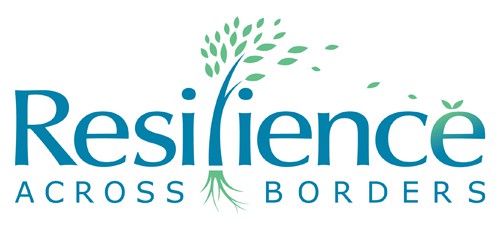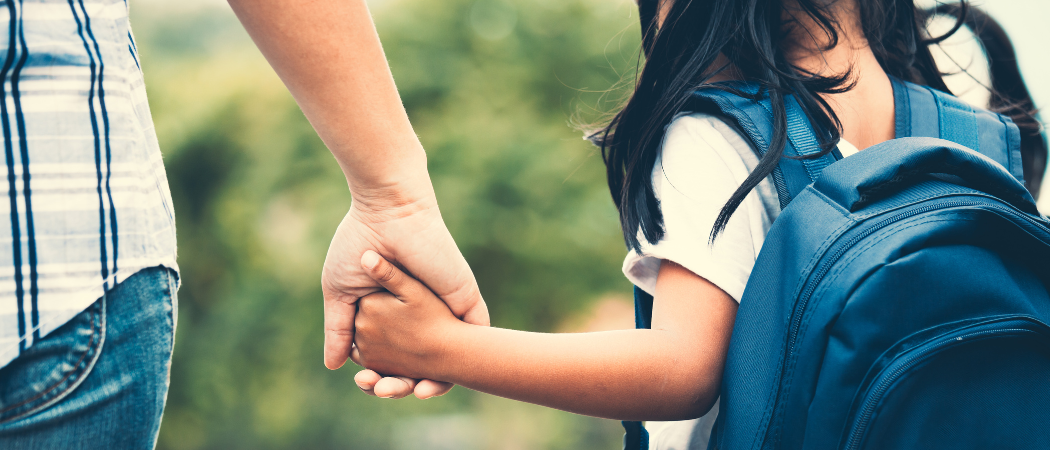Illness and death are a natural part of life, and we’ve all–kids included–been surrounded by far too much of both during the COVID-19 pandemic. Many parents struggle with how to broach these difficult subjects, especially when it comes to speaking with younger children.
Although every story is different, the questions parents ask me tend to have a whole lot in common. Below is a sample of those I hear most frequently–followed by my best advice after 30 years of practicing pediatrics and being a mom.
Should I tell my children that Grandma is sick? They’ve always been very close, and I don’t want them to be scared.
We love our children so much; we wish we could protect them from the painful things in life. But honesty and openness are always the best route with children. Kids are very good at intuiting when there is sadness or stress in a family. Hearing whispers behind closed doors causes way more anxiety for them than facing sad or even scary truths—especially if you answer any questions they raise in a frank and calm way, using age-appropriate language.
Even with very young children, the explanation should be direct and clear. It’s good to start with something to prepare them such as: “I want to talk with you about something that is sad.” That prepares them for hearing something hard. For example: “Grandma is very sick and her heart isn’t working anymore. The doctors feel she will die very soon.” Then you wait, allowing time for the information to sink in and to assess your child’s response. You can be there to hold them, love them, answer any questions, and accept any response they may have. You can let them know you are sad and that it is ok to cry or not to cry.
For some children, the information will sink in slowly, and you will need to keep coming back to explore how they feel. Sometimes with younger children, tackling these topics is more accessible through play, perhaps using dolls or toys to act out different emotions and responses. Sometimes children, even older children, may not want or be able to talk right away. Let them know this is ok. Keep going back to ask how they are feeling and if they want to talk or just spend time together. Sometimes just having a parent there and feeling a non-verbal loving connection is what your child needs if they are not ready or able to talk.
How do I tell my child that someone has died?
Once again, I think it’s important to use clear and honest language. Euphemisms can sometimes be scarier for children because they are harder to understand than clear language. And it’s important to remember that when there is a death, children’s worries are going to focus on the living people they love the most. They may ask questions that suggest that they are worried about you–it is ok to reassure them that you are very healthy and so are they.
Sometimes it is appropriate to let kids know that what happened is no one’s fault; kids will sometimes feel guilt or engage in magical thinking (i.e., unrealistic reasoning to make sense of difficult experiences) around a death. Because of their vivid imaginations and because they often feel they have enormous power to make both good and bad things happen in the world, children’s magical thinking is very common and can be quite intense. They may, for example, worry that something they or someone else said or did (or didn’t do) was the cause of the death. It is very important to talk about these thoughts so they do not lead to excessive worry and shame.
As painful as it is to see your child suffer, it is important to be there with their pain and not rush to try to make them feel better. Pain and sadness are a part of life; we want to open the door for our children to tolerate and be with all of their difficult emotions.
Is it okay for my child to see me grieving?
Yes! It is okay for a child to see a parent cry. It is okay for a parent to say, “I am feeling sad.” At the same time, it’s important to try to keep your child’s life as consistent as possible, even when you are deeply grieving. They will be fearful if they feel a parent is so distraught that they are unable to take care of them in their usual way. Reassure your child that although there is sadness and grief in your life right now, you have each other and will get through this together. Keeping routines as close to normal as possible in terms of bedtime, meals, and family rituals is important to give them a feeling of safety and a sense that life will go on. You can read more about understanding and honoring your own grief here.
Should I bring my child to a funeral?
I think this depends on the child’s maturity level. Sometimes images from a funeral can be very scary to young children (i.e. seeing the body, dirt getting shoveled on a coffin) and you may decide that it is better not to have a smaller child attend. Older children may want to participate in the family ritual, and it can be very connecting and healing for them. If you decide that it’s better for your young child not to attend, you may want to have your own separate family ritual, so that your child has the chance to process the death and feel connected in a warm and comforting way.
What if my child won’t talk about the death of a loved one–even someone really close?
Sometimes parents worry that their child is not even reacting to the news of a death and is continuing to live their life as though it never happened. It is important to realize that children may need time to process the event. Continue to try to connect with your child to find out whether there are any big feelings that they are hiding or burying, but don’t push. Accept all responses and do not have expectations that your child should react in any particular way. As difficult and painful as it is to talk about death with a child, it is important for our kids to know that we are there for them to talk about anything. (And we’re there for them when they don’t want to talk.) We want them to know that we are not retreating from hard topics. Butsometimes the best way to “be there” is just to be there, without looking for more.
What if my child asks me a question I can’t answer? Or that I don’t want to answer?
Sometimes it’s hard to know how to answer a question your child asks you. It is always okay to say, with any type of question, “I am going to think about how to answer that best and get back to you.” (A great technique for buying yourself some time before answering any question!) This gives you an opportunity to think things through, and if you are still unsure, you can ask a trusted friend or relative, or your pediatrician. Remember: You are not expected to know all the answers, but you do want your children to know that they can ask you anything.
Dr. Dana Kornfeld serves on the board of Resilience Across Borders. Dr. Kornfeld is an Associate Clinical Professor of Pediatrics at The George Washington School of Medicine. She practices pediatrics, with a specialty in adolescent medicine, at the Pediatric Care Center in Bethesda, Maryland.
Book List for Families Dealing with Loss
- Tear Soup: A Recipe for Healing after Loss by Pat Schweibert & Chuck Deklyen
- When Dinosaurs Die: A Guide to Understanding Death by Laurie Krasny & Mark Brown
- I Have a Question about Death: A Book for Children with Autism Spectrum Disorder or Other Special Needs by Arlen Grad Gaines & Meredith Englander Polsky
- Stones For Grandpa by Renee Londner & Martha Aviles
- Lifetimes: The Beautiful Way to Explain Death to Children by Bryan Mellonie & Robert Ingpen
- Straight Talk about Death for Teenagers: How to Cope with Losing Someone You Love by Earl Grollman
- The Fall of Freddie the Leaf: A Story of Life for All Ages by Leo Buscaglia
- Something Very Sad Happened: A Toddler’s Guide to Understanding Death by Bonnie Zucker & Kim Fleming








